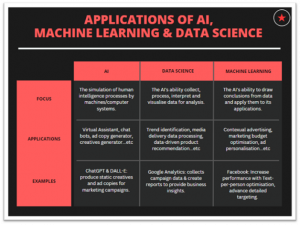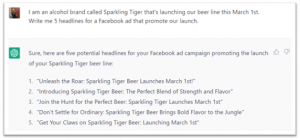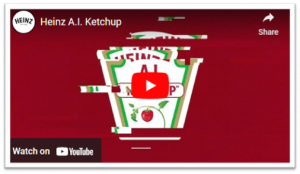From ChatGPT to DALL-E: How AI Chatbots are shaping the future of advertising
6th March 2023
Back to articlesFrom ChatGPT to DALL-E: How AI Chatbots are shaping the future of advertising
By Eddie Price, Digital Media Assistant
AI chatbots have rapidly become a vital part of digital advertising strategies. They allow brands to engage with customers in a personalised and timely manner, providing them with a seamless, individualised experience. These chatbots use natural language processing (NLP) to understand and respond to customer queries, providing them with the information they need to make informed decisions.

The rise of AI chatbots has been driven by advances in machine learning and deep learning algorithms. One recently released AI Chatbot causing a stir is ChatGPT, developed by OpenAI. ChatGPT is an NPL-based language model which can generate human-like responses to user queries. Its ability to understand context and generate relevant responses has made it a popular tool for businesses looking to enhance customer engagement.

Another OpenAI developed example of AI-powered advertising is DALL-E. DALL-E is an image generator that uses AI to create unique images based on textual descriptions. It has the potential to revolutionise the way brands create visual content for their advertising campaigns. Through the utilisation of DALL-E, brands can now generate unique and personalised visuals that connect with their audiences.
Chatbots and image generators are merely the initial steps in AI’s impact on advertising. As AI technology advances, we anticipate more sophisticated AI-based approaches that enhance customer engagement and offer more tailored experiences. For example, AI chatbots could use facial recognition technology to recognise and respond to customer emotions, providing them with tailored responses based on their mood.
Nevertheless, even state-of-the-art AI products are without flaws. Although AI has been rapidly improving in terms of creativity and innovation, one drawback is that it can still appear rigid and robotic in generating text and images, lacking the human touch. Despite advancements in this area, the creative output of AI still falls short compared to humans. AI can also sometimes make mistakes that a typical human would not, potentially leading to quality & compatibility concerns. An example could be seen in the above photo where the generated headlines seemingly look great in terms of quality but would not be usable as they surpass the recommended character limit for Facebook ad headlines (only 27 characters). Hence, in some cases, AI has yet to reach a sufficient level of accuracy.
It is important for businesses to understand the limitations of AI and use it in conjunction with human expertise to create more effective campaigns. Will artificial intelligence ever replace humans in such a creativity-driven industry as advertising? Probably not. Ultimately, the key to successful AI-powered advertising is finding the right balance between technology and the human touch.


